Are you tired of waking up to the loud and annoying sound of your alarm system every morning? It’s time to learn how to turn it off with a simple code.

Turning off an alarm system with a code is straightforward and requires a few simple steps. Whether you’re deactivating your system for routine maintenance, disabling it after it has been accidentally triggered, or preparing your home for guests, knowing how to correctly input your code into the control panel is essential. This process not only ensures the security of your property but also allows for the smooth operation of your alarm system.
In this guide, we will walk you through the basics of how to turn off alarm system with code, highlighting key tips to ensure the procedure is executed smoothly and efficiently.
What are the Benefits of Turning Off the Alarm System With Code?
There are several benefits to knowing how to disable your alarm system with a code.
- Convenience: By learning how to turn off your alarm system with a code, you can easily control its activation and deactivation without needing external assistance. This is especially helpful when you have guests or service providers in your home.
- Emergency Situations: In an emergency, being able to quickly disarm your alarm system with a code can prevent false alarms and unnecessary panic.
- Maintenance and Repairs: When performing routine maintenance or making repairs to the system, you must turn off your alarm system with a code.
- Avoiding False Alarms: Accidentally triggering your alarm system can be a nuisance and may also result in fees from emergency services. Knowing how to turn off your system with a code can prevent this from happening.
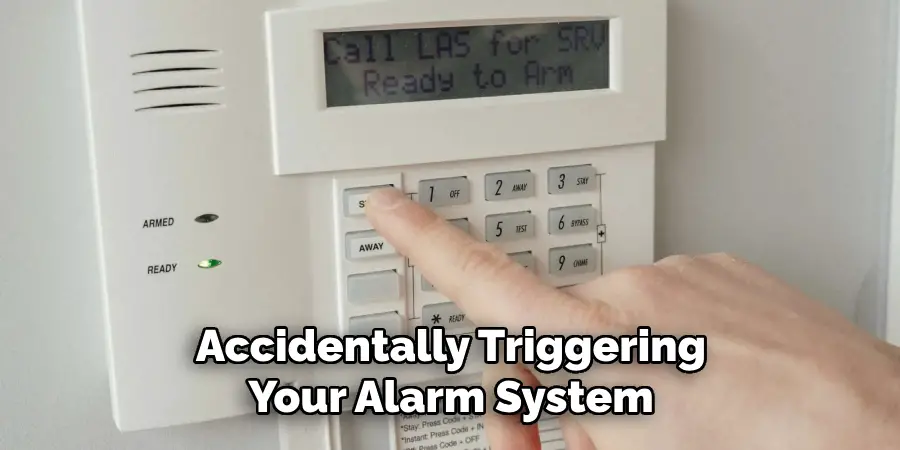
These are just a few of the benefits of knowing how to turn off your alarm system with a code. Now, let’s examine the steps involved in doing so.
What Will You Need?
To disable your alarm system with a code, you will need the following:
- Control panel access code
- Keypad or control panel (depending on your system)
Once you have these items ready, follow the steps below to successfully turn off your alarm system.
10 Easy Steps on How to Turn Off Alarm System With Code
Step 1. Approach the Keypad or Control Panel:
First, calmly walk up to the control panel or keypad installation in your home. This is typically located near the main entrance or in a commonly accessible area for easy access. Remember, haste can lead to mistakes when entering your code, so it’s essential to approach this step with a clear mind.
Step 2. Wake the System if Necessary:
In some instances, your alarm system’s keypad or control panel may enter a sleep mode to conserve energy. If the screen is blank or appears unresponsive, gently press any button to wake it.
Some systems require a specific key to be pressed, such as the “home” or “wake” button, so refer to your user manual if you are unsure. This step is crucial for preparing the system to receive your input and ensures that the keypad is ready for code entry.
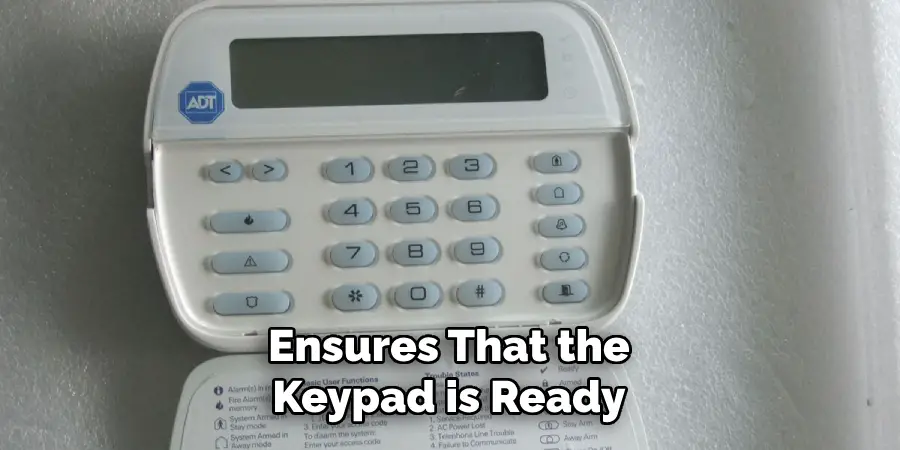
Step 3. Enter Your Access Code:
Now that your system’s keypad or control panel is awake and ready for input, carefully enter your specific access code. This code is a unique sequence of numbers that was set during the initial installation or last update of your system.
It’s important to enter the code accurately to avoid any errors that could trigger an alarm or lockout. Ensure each keypress is registered on the display to confirm you’re entering the code correctly. If you make a mistake, most systems allow you to press a clear or back button and re-enter your code from the beginning.
Step 4. Press the Off or Disarm Button:
After you have successfully entered your access code, the next step is to press the “Off” or “Disarm” button on your keypad or control panel. This button might be distinctly labeled or, in some systems, represented by a specific symbol or number sequence.
Pressing this button signals to your alarm system that an authorized user wishes to deactivate it, effectively turning off the system. It is critical at this stage to wait for a visual or auditory confirmation that the system has been disarmed, such as a green light on the keypad or a short beep sequence. This confirmation ensures that the system has correctly processed your command and is now turned off.
Step 5. Verify the System is Turned Off:
Once you’ve received confirmation that your alarm system is disarmed, it’s wise to verify that the system is indeed turned off. Check the control panel or keypad display to ensure there are no active alarm signals or warnings. The display should indicate that the system is on standby or deactivated.
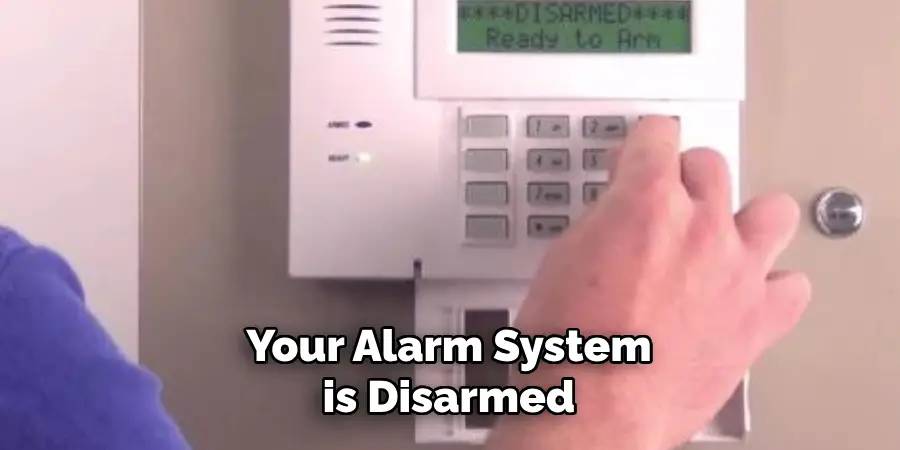
If your system has a mobile app or web interface, you can also log in to confirm the system’s status remotely. Verifying that the alarm system is fully disarmed is an essential step to prevent accidental triggering or misunderstandings about the system’s current state.
Step 6. Record the Time and Date of Deactivation:
For security and maintenance purposes, it’s a good practice to note the time and date when you turned off the alarm system. This can be particularly useful for household tracking, security audits, providing a log of system activities to your alarm service provider, or in the event of a security breach.
Most modern systems automatically log this information, but manually recording it or confirming it through your system’s log can serve as an extra layer of assurance.
Step 7. Secure the Control Panel:
After deactivating your alarm system and documenting the time and date, ensure the control panel or keypad is secure. This involves checking that the control unit is physically intact, with no signs of tampering or damage. If your system includes a physical lock or requires a key to access the control panel, make sure it is locked or secured to prevent unauthorized access.
This step is crucial for protecting the integrity of your alarm system and ensuring that it can be reliably reactivated when needed. Additionally, it’s a good practice to periodically clean the keypad or control panel to keep the interface clear and responsive for future inputs.
Step 8. Reactivate Your System When Necessary:
Once your system is turned off and secured, it’s important to remember to reactivate it when needed. To do this, simply repeat the steps above in reverse order. Start by waking the system if it’s in sleep mode, entering your access code, and then pressing the “Arm” or similar button to reactivate your alarm system.
It’s crucial to wait for visual or auditory confirmation that the system has been successfully armed. This ensures your home is protected again. Remember, an alarm system can only provide security when it’s properly armed, so make a habit of activating it whenever you leave your home or go to sleep.
Step 9. Test Your System Regularly:
It is imperative to test your alarm system regularly to ensure its proper functioning. Schedule a system test at least once a month to verify that all components are working correctly. Inform your alarm service provider before you begin the test to prevent any unnecessary alarms or dispatches.
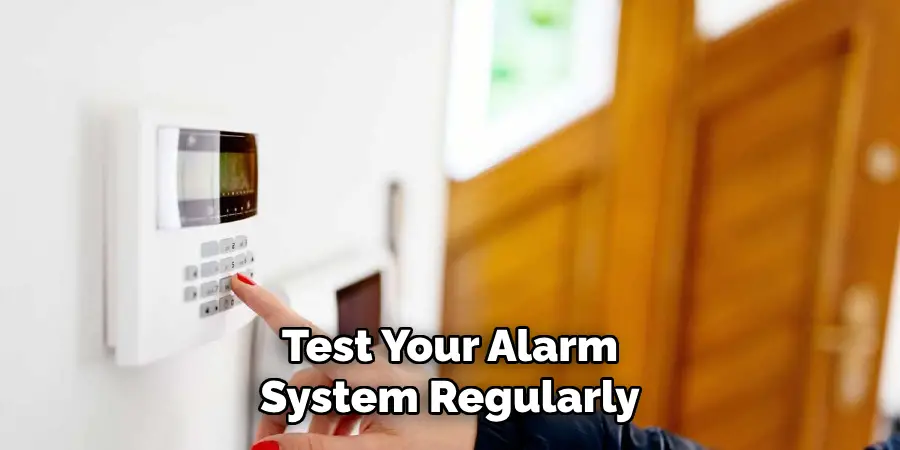
To test, follow your system’s testing procedure as outlined in the user manual, which typically includes triggering each sensor one at a time and verifying that the system responds as expected. Testing not only reassures you that your system can protect your home but also identifies any issues that need addressing to maintain the system’s reliability.
Step 10. Contact Your Alarm Service Provider:
Should you encounter any problems during the deactivation, reactivation, or testing of your alarm system, or if you notice any irregularities in its functioning, it is crucial to contact your alarm service provider immediately. Regular maintenance checks by a professional can prevent potential problems and ensure your system’s longevity and effectiveness.
Your provider can offer support for troubleshooting issues, performing system upgrades, or replacing faulty components. Remember, maintaining open communication with your service provider enhances the security of your home and ensures your alarm system operates at its best.
By following these steps, you can confidently deactivate and reactivate your alarm system as needed.
5 Additional Tips and Tricks
- Always Have a Backup Code: Besides your primary code, ensure you have a backup code. Store this code in a secure, accessible place to you but hidden from others. Having a backup ensures you can still disarm your system even if you forget the primary code.
- Regularly Update Your Code: To enhance security, change your alarm system’s code periodically. Avoid using easily guessable codes like birthdays or anniversaries. A complex and unique code reduces the risk of unauthorized access.
- Use Temporary Codes for Guests: If you need to give access to guests, workers, or sitters, use temporary codes that can be easily added and removed from the system. This way, you maintain control over who has access to your property without compromising your primary code.
- Practice Under Pressure: In a real emergency, you must act quickly. Practice entering your code under simulated pressure to ensure you can disable the alarm swiftly and efficiently during an actual emergency.
- Maintain Your Alarm System: Regular maintenance checks can prevent technical issues that might make it difficult to turn off your alarm system. Ensure that all components are working correctly and replace any outdated or malfunctioning parts.
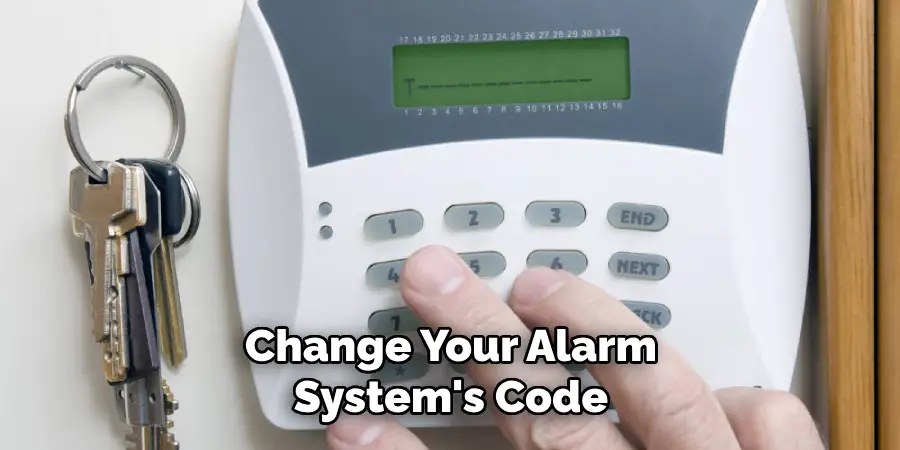
With these additional tips and tricks, you can ensure your home alarm system is always functioning optimally and providing the best possible security for your property.
5 Things You Should Avoid
- Do Not Use Obvious or Common Codes: Avoid using codes that are easy for others to guess, such as “1234” or “0000”. These are among the first combinations an intruder might try.
- Avoid Writing Down Your Code in Visible Places: Never leave a note with your alarm code near the system or in places where others can easily find it. This compromises the security of your home.
- Don’t Share Your Code with Too Many People: Limit the number of individuals who know your alarm system code. The more people who have access, the higher the risk of unauthorized entry.
- Avoid Changing Codes Too Frequently: While it’s important to update your code periodically, changing it too often can lead to confusion among authorized users, increasing the chance of a false alarm.
- Don’t Neglect to Inform All Users of Code Changes: Whenever you change the code, ensure that all authorized users are informed promptly. Failing to do so could lead to unnecessary panic or a security breach if they try to use an outdated code.
By avoiding these common pitfalls, you can maintain the integrity of your home’s security system and ensure that it remains an effective tool for safeguarding your property.
How Can You Troubleshoot Your Alarm System?
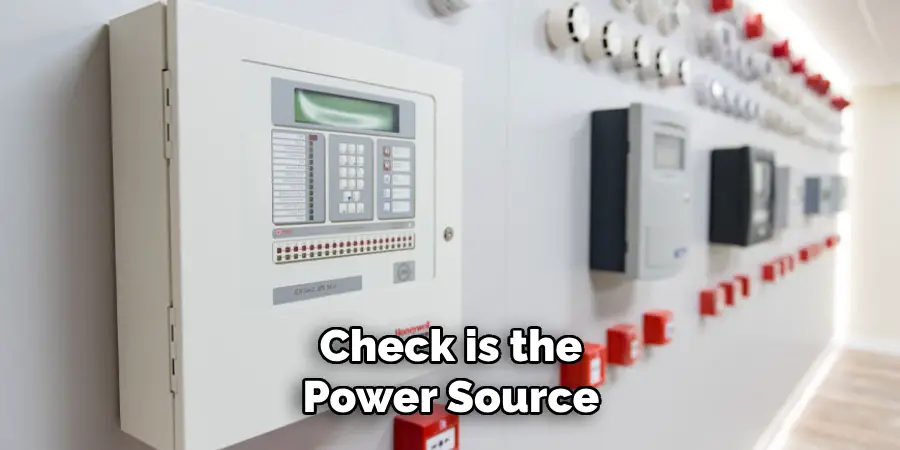
- Check the Power Source: If your alarm system is not working, the first thing to check is the power source. Ensure that it is plugged in and receiving power.
- Battery Replacement: Most alarm systems have a backup battery in case of power outages. If your system still isn’t functioning after checking the power source, try replacing the battery.
- Check for Error Messages: Many alarm systems have error codes or messages that can help pinpoint the issue. Check your system’s manual or contact your provider for assistance.
- Inspect Sensors and Detectors: Ensure all sensors and detectors are properly connected and not obstructed by any objects. Dust or debris buildup on sensors can also cause issues, so ensure they are clean and functioning correctly.
- Contact Your Provider: If you are unable to troubleshoot the issue, contact your alarm system provider for further assistance. They may be able to remotely diagnose and fix the problem or send a technician to repair any hardware issues.
By following these troubleshooting steps, you can quickly identify and resolve any problems with your alarm system to ensure it continues functioning properly.
What are the Disadvantages of DIY Alarm Systems?
- Limited Customization Options: DIY alarm systems typically come in a one-size-fits-all package, limiting your ability to customize the system to fit your specific needs.
- Lack of Professional Monitoring: Without professional monitoring, you will not have access to 24/7 surveillance or immediate emergency response in case of a break-in or other emergency.
- Potential for Human Error: DIY installation requires a certain level of technical expertise, and mistakes can lead to system malfunctions or vulnerabilities that compromise your home’s security.
- Limited Integration with Other Devices: Most DIY alarm systems only work with specific devices, limiting your ability to integrate them with other smart home technology.
- No Warranty or Customer Support: Without a reputable and established alarm system provider, you may not have access to warranties or customer support in case of any issues with your DIY system.

While DIY alarm systems can be cost-effective and provide some level of security, they also have limitations that should be considered when choosing a home security solution. It is important to weigh the pros and cons carefully before deciding on a DIY alarm system for your home. Overall, it is recommended to seek professional installation and monitoring for optimal security and peace of mind.
How Can You Connect Your Alarm System to Other Smart Home Devices?
- Choose a Compatible Alarm System: Before connecting your alarm system to other devices, make sure that it is compatible with other smart home technology.
- Install a Hub or Bridge: A hub or bridge acts as the central control point for all your smart home devices and allows them to communicate with each other. Install one to connect your alarm system with other devices.
- Use IFTTT (If This, Then That): IFTTT is a web-based service that allows you to create conditional statements between different smart home devices. Use this platform to set up triggers and actions for your alarm system and other devices.
- Explore Manufacturer Apps: Many manufacturers have their own apps that allow you to control and connect their devices. Check if your alarm system provider has an app or integrates with any other smart home apps.
- Consider Professional Installation: If connecting your alarm system to other devices seems too complicated, consider professional installation and integration services. This ensures a seamless and secure connection between all your smart home devices, including the alarm system.
These steps can help you connect your alarm system to other smart home devices, allowing for a more comprehensive and integrated security system.
Conclusion
How to turn off alarm system with code is a straightforward but critical operation, essential for managing your home’s security system efficiently. By entering your unique code, you can silence your alarm during false alarms or when you’ve verified that there’s no threat. However, it’s crucial to protect this code and only share it with trusted individuals to prevent unauthorized access.
Always remember to regularly update your code for added security and inform all authorized users of any changes. If you encounter any issues when trying to turn off your alarm system, refer to the troubleshooting tips provided or contact your alarm system provider for assistance.
Adhering to these practices ensures your alarm system functions as an effective security measure, safeguarding your home and giving you peace of mind.
You Can Also Check This Out to Turn Light Off on Security Camera

